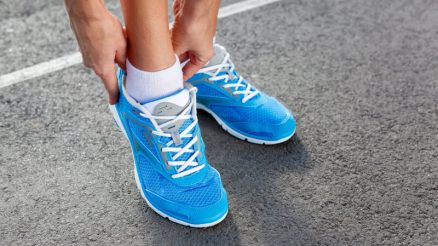How to Train for Your First 5K, 10K, Half Marathon, or Marathon
Training for your first race is an exciting journey. Whether you’re aiming to complete a 5K or conquering the ultimate distance of a full marathon, having a solid training plan, the right mindset, and appropriate gear can make all the difference. In this guide, we’ll break down how to prepare for each race distance and offer tips that apply to runners of all levels.
Understanding the Differences Between Race Distances
Before diving into training specifics, it’s important to understand what each race entails:
- 5K (3.1 miles): A great entry-level race, suitable for beginners or those returning to running. Training for a 5K typically spans 6–8 weeks and focuses on building a habit of regular running. It’s perfect for setting short-term fitness goals and experiencing the thrill of race day without the burden of high mileage.
- 10K (6.2 miles): A step up in endurance, ideal for those with a base level of fitness who want a new challenge. Training for a 10K often takes 8–10 weeks and introduces more structured workouts, such as tempo runs and hill training. It’s a balanced blend of speed and stamina.
- Half Marathon (13.1 miles): A popular challenge that requires consistent training over several months—typically 10 to 14 weeks. Long runs become a key component of training, alongside proper fueling and recovery strategies. This distance offers a rewarding mental and physical test, making it a favorite among runners seeking to go beyond 10K.
- Marathon (26.2 miles): A significant physical and mental challenge, often requiring at least 16–20 weeks of preparation. It demands disciplined weekly mileage, regular long runs (up to 20 miles), and strategic tapering before race day. Nutrition, hydration, and recovery become even more critical, and mental endurance plays a massive role in finishing strong.
Each race demands a unique approach to training, nutrition, pacing, and recovery.
Step 1: Set a Realistic Goal
Start with a clear, achievable goal. Is your aim to finish the race, hit a personal record, or simply enjoy the process? Your goal will dictate your training intensity, duration, and frequency.
Step 2: Choose the Right Training Plan
Select a plan based on your fitness level, race distance, and available time. A good training plan should include:
- Gradual Progression: Weekly mileage and intensity should increase slowly—generally no more than 10% per week—to prevent overuse injuries such as shin splints, stress fractures, or runner’s knee. This allows your muscles, joints, and cardiovascular system to adapt gradually.
- Rest Days: Essential for recovery and injury prevention, rest days help repair muscle tissue and reduce mental fatigue. Incorporate at least one full rest day per week and consider lighter recovery days after hard workouts.
- Cross-Training: Activities like swimming, cycling, rowing, or yoga build aerobic capacity and muscle balance without the repetitive impact of running. Aim for 1–2 sessions per week to improve endurance and reduce the risk of overtraining.
- Long Runs: Especially important for half and full marathons, long runs should be done once a week and gradually lengthened. They train your body to burn fat more efficiently, build mental stamina, and adapt to extended time on your feet.
- Speed Workouts: Include intervals (short bursts at high intensity), tempo runs (comfortably hard pace), or fartleks (speed play) to build cardiovascular strength, improve your lactate threshold, and enhance running economy. Start with one speed session per week and progress as your fitness improves.
Free and paid training plans are widely available from reputable sources like Hal Higdon, Runner’s World, or Nike Run Club.
Step 3: Invest in Proper Gear
Running doesn’t require much equipment, but a few key items are essential:
- Running Shoes: Get fitted at a specialty running store to find the right pair for your gait, arch type, and running style. A proper shoe can help prevent injuries and improve comfort over long distances. Consider rotating between two pairs to extend the lifespan of each and give your feet slight variations in support.
- Moisture-Wicking Clothing: Avoid cotton, which holds moisture and can cause chafing. Instead, opt for synthetic or merino wool fabrics that draw sweat away from your body and dry quickly. Look for running-specific socks, shirts, and shorts to minimize friction and maximize comfort in all weather conditions.
- Running Watch or App: A GPS-enabled watch or mobile app can help you track your runs, monitor pace, set interval timers, and review performance over time. Advanced features like heart rate monitoring and cadence tracking can offer deeper insights into your training, helping you train smarter and avoid burnout.
Step 4: Nutrition and Hydration
Fueling your body correctly is crucial for performance and recovery:
- Daily Nutrition: Focus on whole foods that support training performance and recovery. Aim for a balanced intake of complex carbohydrates (like oats, quinoa, sweet potatoes), lean proteins (chicken, fish, legumes, tofu), and healthy fats (avocados, nuts, olive oil). Stay consistent with hydration throughout the day, aiming for half your body weight in ounces of water, more if you’re sweating heavily.
- Pre-Run Fuel: Eat a light snack with easily digestible carbohydrates 30–60 minutes before running. Good options include a banana, a slice of toast with jam, or an energy bar. For early morning runs, a few bites of a carb-rich snack may suffice. If you run later in the day, be mindful of your meals in the hours leading up to it—avoid high-fat or high-fiber foods that may cause GI discomfort.
- During the Run: For runs lasting more than 60 minutes (generally applicable to races longer than 10K), practice fueling with gels, chews, or sports drinks containing carbohydrates and electrolytes. Aim to consume 30–60 grams of carbs per hour. This not only trains your digestive system but helps sustain energy and delay fatigue.
- Post-Run Recovery: Within 30–60 minutes post-run, aim for a snack or meal with a 3:1 ratio of carbs to protein. This helps replenish glycogen stores and supports muscle repair. Examples include chocolate milk, a smoothie with fruit and protein powder, or a turkey sandwich with fruit. Continue hydrating and consider including some sodium to replace electrolytes lost in sweat.
Step 5: Listen to Your Body
Injuries and fatigue can derail training. Pay attention to signs like persistent soreness, sharp pain, or extreme fatigue. Don’t ignore rest days and consider working with a physical therapist or coach if issues arise.
Step 6: Practice Race Day Strategies
In the weeks leading up to your race:
- Test Gear and Nutrition: Never try something new on race day. Use your long runs to test everything—shoes, socks, clothing, hydration systems, and nutrition. This includes energy gels, electrolyte drinks, and even your breakfast. Simulate race conditions during training to find what works best for your body and prevent surprises on the big day.
- Taper: Reduce training volume 1–3 weeks before race day, depending on the distance. This doesn’t mean stopping training altogether; instead, cut back on mileage and intensity to allow your body to rest, repair, and replenish energy stores. A proper taper helps you arrive at the starting line feeling fresh and strong. For a marathon, tapering usually lasts 2–3 weeks, while a shorter taper of 1–2 weeks is often enough for a half marathon, 10K, or 5K.
- Mental Prep: Visualize the race from start to finish—imagine yourself handling each mile with confidence, overcoming fatigue, and crossing the finish line strong. Use mantras or motivational phrases during tough moments. Practice mindfulness and breathing techniques to calm pre-race nerves. Study the course map, note water stations and elevation changes, and develop a pacing strategy to avoid burnout.
Final Thoughts
Completing your first race, whether it’s a 5K or a marathon, is a milestone worth celebrating. The training process builds not only physical strength but also discipline and mental toughness. Stay consistent, be patient with your progress, and most importantly, enjoy the journey.
Happy running!








